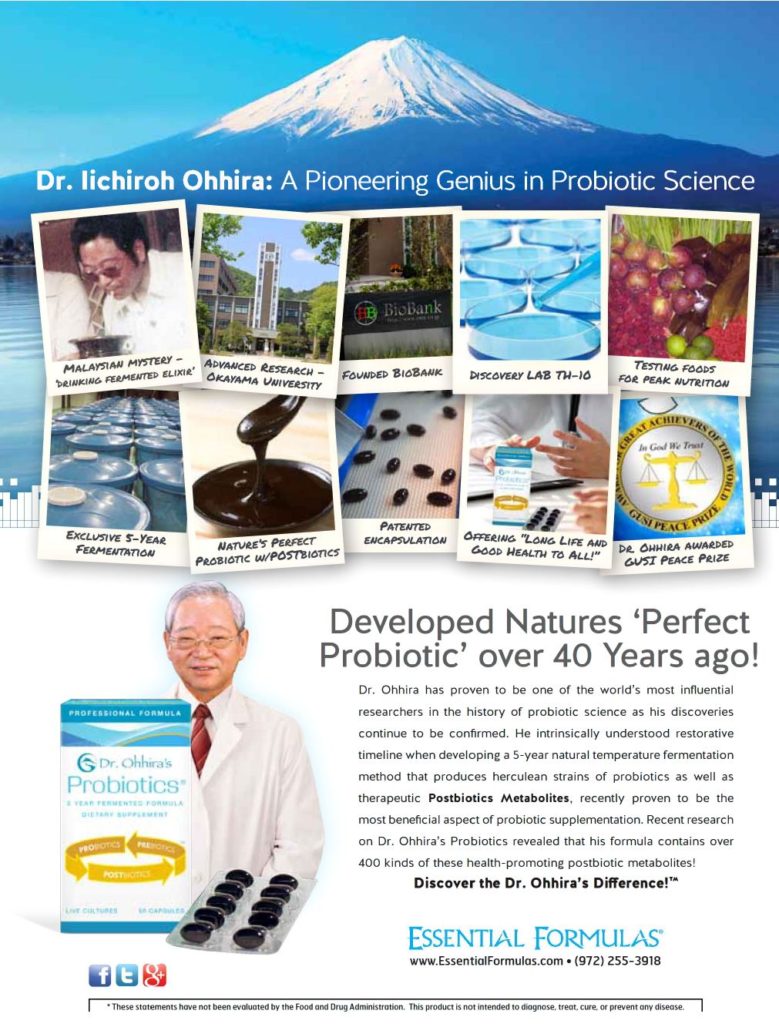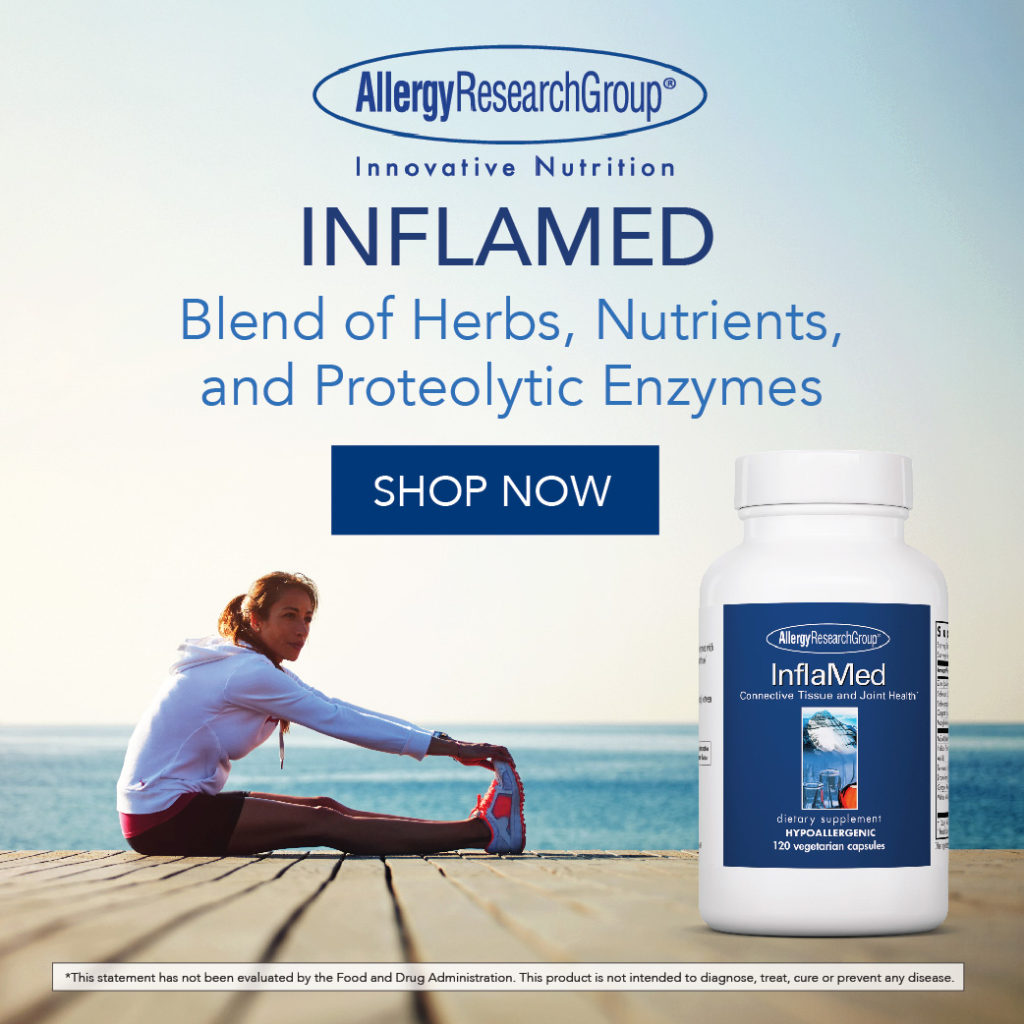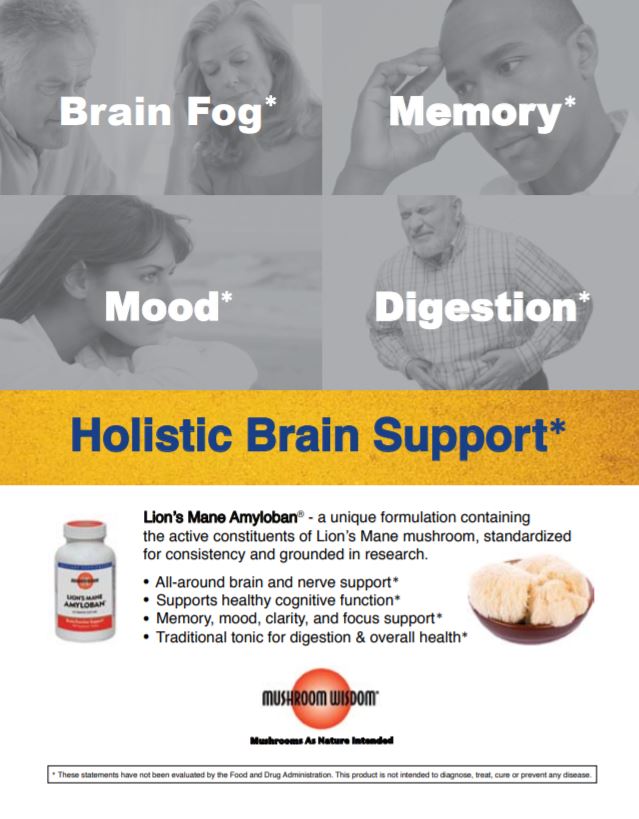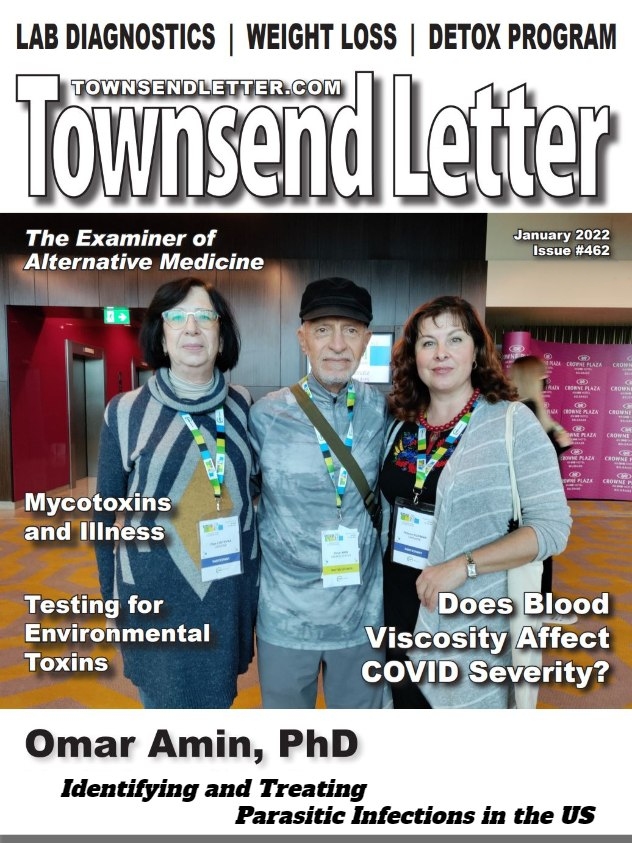By Sue Visser
Bromelain is a proteolytic (protein digesting) enzyme that is present in the stems, leaves, skin and fruit of pineapple plants. As a traditional herbal medicine, bromelain is one of the most versatile, non-toxic and completely natural drugs we have. Several clinical studies have demonstrated the therapeutic efficacy and low toxicity of bromelain. The most recent in-depth molecular studies in August 2021, confirm that it disintegrates spike proteins—now proposed by some researchers as one of the best targets for anti-SARS-CoV-2 drugs. If these spikes are deprived of protein the game is over, regardless of the mutations that constantly frustrate would-be drug and vaccine developers because they all contain protein. Spike proteins bind to ACE2 receptor sites that are present in several organs, including the oral and nasal mucosa, nasopharynx, lungs, arteries, heart, kidneys, stomach, and intestines. These sites are where inflammation is triggered. Bromelain also has built-in antioxidant, mucolytic, anti-inflammatory, immune-modulating and anticoagulant effects.1-4
Even eating fresh pineapple or drinking the juice will unleash enough bromelain to help you better digest a rich meal and will clear excess protein (fibrin) from the bloodstream. This helps us to control blood coagulation (clotting), cholesterol levels, tenacious mucous (heavy cough), inflammation and swelling. Stiffness, pain and all the suffering associated with fibromyalgia or any inflammatory disease is commonly caused by an overgrowth of fibrin.5 Practically speaking, we can’t really tell patients to eat pineapples three times a day. Bromelain capsules that are freely available are easier to take. They can be accurately prescribed and monitored by a doctor if patients are taking medications that may be affected by bromelain.
Benefits of Bromelain
A dose or two of bromelain a day can address the following.
Inhibit SARS-CoV-2 infections. A study in August 2020 demonstrated that bromelain can inhibit SARS-CoV-2 infection by targeting all three host ACE-2 and TMPRSS2, and SARS-CoV-2 S-proteins.1 During the ongoing COVID-19 pandemic, natural remedies that can target the spike protein, the hub of coronavirus infections are now being scrutinized. New studies from August 20214 used computer modelling, molecular docking approaches and molecular dynamics simulations to evaluate bromelain’s ability to inhibit various variants of the SARS-Cov-2 virus receptor-binding domains.6 The studies concluded that bromelain can “inhibit SARS-CoV-2 infection in VeroE6 cells by lowering the expression of the host cell receptor angiotensin-converting enzyme 2 (ACE-2) and the primed SARS-CoV-2 spike (S) protein.” Bromelain has thus been suggested as an antiviral agent for COVID-19 therapy4 as it can prevent viral entry into the host cells.
Manage bleeding disorders. Bromelain prevents blood clotting and improves circulation.7 Cytokine reactivity causes thrombosis by increasing platelet aggregation, but bromelain suppresses these pro-inflammatory cytokines. It also prevents thrombosis by inhibiting platelet aggregation, primarily by increasing the plasmin concentration. The concentration of fibrinogen in serum is also reduced by bromelain. As a result, it reduces edema and pain while increasing blood flow to the injury. For the technically minded we would say that “suppressing ADP-induced aggregation of platelets, bromelain delays both prothrombin time (PT) and activated partial thromboplastin time. It also reduces pre-kallikrein (PK), and thus, inhibits the generation of bradykinin at the site of inflammation.” Phew! According to two large scale tests, the combined fibrinolytic and anti-coagulant effects of bromelain helped to alleviate thrombosis in heart patients.8
Break up thick strands of mucous. The accumulation of fibrin strands within the respiratory tract is also associated with fibrocystic lungs, asthma, and allergies. Bromelain’s penetration into the blood and sino-nasal mucosa9 is beneficial for patients with chronic rhinosinusitis. It exerts powerful mucolytic effects,10 on all the ACE2 receptors throughout the respiratory system. With the resultant reduction of fibrin, the mucous is thinner and better able to trap pathogens and expel them. Bromelain is also a highly respected cough remedy. It can be added to throat and nasal sprays, for more direct contact with ACE2 receptors on the front line – the nose and throat, where we inhale all manner of viruses, bacteria, mold, fungi and other pathogens.
Control pain, inflammation and swelling. Bromelain elicits an anti-inflammatory response by reducing prostaglandin E2 (PGE-2) and cyclooxygenase-2 (COX-2) synthesis to curtail cytokine storms. Unlike some other anti-inflammatory drugs, it does not block out the anti-inflammatory effects of PGE-1 and PGE-3.11-13 Bromelain has been widely used as an analgesic agent to treat muscular, arthritic, and other types of pain. Studies reported that it improves the all-round quality of life for patients and reduces pain and inflammation after dental surgery – good to know!
Work as an immune modulator. Bromelain has been found to strengthen immunogenicity by increasing IFN-gamma and TNF alpha levels, yet it inhibits cytokine formation by preventing T cell activation in cases of inflammation. Bromelain can thus modulate cytokine levels both before, after, and during an infection. “Bromelain acts through a physiological modulation of the inflammatory response, which is a defence reaction indispensable for the safeguarding of our body’s protective mechanisms.”14
Kill bacteria and destroy parasites. Bromelain acts as an antibacterial agent by inhibiting Vibrio cholera and Escherichia coli, preventing associated diarrhea, and soothing gut inflammation. As an anthelmintic, bromelain works against gastrointestinal nematodes like Heligmosomoides polygyrus, Trichoderma viride, and Trichuris muris. The synergistic impact of bromelain has also been observed when it is used concurrently with antibiotics and can treat fungal infections, especially pityriasis lichenoides chronica, a skin disorder that produces tiny, scaling, raised spots on the skin. Bromelain also has antidiarrheal effects and is an important nutraceutical treatment for diarrhea.15
Break down fibrin and aid digestion. Most conditions associated with inflammation are linked to excessive fibrin, owing to the incomplete digestion of dietary proteins.5 We can all benefit from bromelain as many of us are actually suffering from incomplete indigestion. Over time, this leads to a fibrin overload that has accumulated in muscle tissue, mucous membranes, blood vessels, and around the joints for decades! For example: many types of cancer, arthritis, atherosclerosis, back pain, chronic fatigue, chronic pain, fibrocystic breasts, fibromyalgia, high blood pressure, sciatica, spinal stenosis, strains and sprains, post-operative scar tissue and uterine fibroids are exacerbated by a fibrin overload.
Assist with skin lesions, scars, and necrotic tissue debridement. When applied as a cream, bromelain assists with the debridement (removal) of necrotic tissue. It speeds up the healing of skin lesions and eases irritation, itching and inflammation of the skin. Just keep it away from the eyes and open wounds where it can cause stinging and itching—as I found out the hard way!
Address factors that cause cancer. In recent years, studies have shown that bromelain has the capacity to modulate key pathways that support malignancy. It modulates immune, inflammatory, and haemostatic pathways and has anti-neoplastic effects. The inhibition of tumor development is induced by p53, shifts in the Bax/Bcl-2 ratio. It decreases in Cox-2 expression and inhibits the NF-κB pathway by regulating MAPK and Akt/PKB avenues. Tumor cells favor blood platelet aggregation to protect the malignancy from immune recognition and as we know, bromelain will take care of that, as well as biofilms! It also destroys any signalling pathways that depend on protein to promote the development as well as spread of cancer.8, 16-18
Bromelain versus prescribed medications with adverse effects.11-13 Bromelain can effectively compete against a number of patent drugs head to head, helping to reduce our medical carbon footprint as well the dependence on synthetic drugs. An affordable solution from pineapples—uncomplicated by drug-to-drug reactions and destructive side effects.19
Bromelain’s therapeutic potential role in reducing the severity of symptoms and the adverse effects of other antiviral drugs has been investigated in a recent study.20 A bromelain-biased approach may be worth considering for patients who would prefer alternatives21 to drugs that may be causing problems that result in ongoing conflict or the necessity for revising a prescription. Steroid anti-inflammatory drugs have a downside14 because they favor infections, are immunosuppressant and cause osteopenia (osteoporosis) and eye problems (cataracts and glaucoma). NSAIDs are considered as generally safe for use by most people.11 However, it is still possible to experience side effects, including gastrointestinal issues, headaches, drowsiness, dizziness, allergic reactions, and issues with blood pressure, heart, and liver function.
For cases of swelling or edema, including post-surgical or the general swelling of vocal cords, the larynx, throat or sinuses, bromelain could be considered as an alternative as recommended by Doctor Giancarlo Palmieri (Chief of Internal Medicine – Niguarda Hospital Ca’ Granda, Milan): “It can be employed for acute and chronic inflammatory conditions: surgery, chronic rhinosinusitis and otitis, inflammatory processes of the upper airways, epididymitis, sports injuries, mastitis, etc.”
There are also many drug reactions to consider if used in combination with SARS-Cov-2 treatments.11-13 So too, antiviral drugs (remdesivir, lopinavir, umifenovir, favipiravir, and oseltamivir), viral protease inhibitors (lopinavir and darunavir), anti-inflammatory agents (tocilizumab), antimalarial drugs (chloroquine and hydroxychloroquine), or parasite remedies (ivermectin)15 may be in conflict with the chronic medications a patient may be taking.
What About Warfarin and Other Vitamin K Antagonists?
A patient on Warfarin who drank a cup of pineapple juice for a few days experienced advanced anti-coagulant effects, including blood in her urine, intra-abdominal haemorrhages, a badly swollen left leg, and signs of visible skin bruising.22 Bromelain duplicates the effects of warfarin, and it is important to correct the resultant bleeding issues. The temporary suspension of anticoagulants with the administration of vitamin K is a widely accepted protocol.23 While eating moderate quantities of foods that are rich in vitamin K shouldn’t interfere with an anticoagulant, patients should avoid consuming too many greens such as kale, spinach, Brussels sprouts, mustard greens, chard, and broccoli. Green smoothies concentrate levels of vitamin K and may be in conflict with anticoagulants.24 However, a vitamin K deficiency needs to be considered if bleeding becomes excessive, especially if the platelet count begins to drop. Serious blood clotting/bleeding issues are common to patients infected by SARS-CoV-2 and its ongoing mutations. Although treating COVID-19 patients with anticoagulants resulted in a more favorable outcome against venous thrombosis (e.g., CVST or SVT), the opposite effect, known as thrombocytopenia, may cause bleeding due to a low platelet count (below 150,000 × mm3). Ironically, a number of people who have been vaccinated have experienced blood clotting, a drop in platelets, and severe bleeding issues.24
Precautions When Using Bromelain
Pineapples and bromelain are freely available to us; but using a medicinal food such as a pineapple/bromelain supplement includes a number of side effects that are dose related. The usual bromelain capsule contains 300-500 mg at a potency of 2000 GDU. Although extremely rare, nausea, vomiting, diarrhea, palpitations, indigestion, loss of appetite, headache, muscle pains, dizziness, drowsiness, and lethargy have been reported from extremely large doses. Bruising, internal bleeding, and heavy menstruation may also occur. Bromelain can increase the absorption of medications,19 including antibiotics (amoxicillin and tetracycline), chemotherapy drugs, (5-fluorouracil and vincristine), and blood pressure medications, specifically ACE inhibitors, (Captopril (Capoten) and lisinopril (Zestril) etc.); so the dose may need adjusting. Patients on blood thinners, anti-inflammatories and medications that potentiate or compete with bromelain must first discuss using bromelain as an alternative with their prescribing practitioner. If you are pregnant, nursing, taking any conflicting medications, or have allergies or intolerances, please check up before taking bromelain or using therapeutic doses of pineapple.
Conclusion
As a green, totally natural medicine, bromelain that is locally extracted from discarded pineapple stems leads the way back to simply using food as medicine. In South Africa they are produced by Enzyme Technologies in Kwazulu Natal, being both important for job creation as well as the environment.
If bromelain can treat the pandemic from start to finish, we could well say that a slice of pineapple keeps the doctor (and COVID-19) away. Hippocrates would have loved that!
References
- https://www.news-medical.net/news/20200917/Could-pineapples-be-a-new-weapon-against-COVID-19.aspx
- https://www.google.com/url?sa=t&source=web&rct=j&url=https://www.mdpi.com/2075-1729/11/4/317/pdf&ved=2ahUKEwizh_zB1eTyAhUToVwKHai-A_4QFnoECB4QAQ&usg=AOvVaw0uhqMD5tUu1ruG6_cqJmP0
- https://www.google.com/url?sa=t&source=web&rct=j&url=https://www.mdpi.com/2075-1729/11/4/317/pdf&ved=2ahUKEwizh_zB1eTyAhUToVwKHai-A_4QFnoECB4QAQ&usg=AOvVaw0uhqMD5tUu1ruG6_cqJmP0
- Frontiers | An Analysis Based on Molecular Docking and Molecular Dynamics Simulation Study of Bromelain as Anti-SARS-CoV-2 Variants | Pharmacology (frontiersin.org) ORIGINAL RESEARCH article Front. Pharmacol., 20 August 2021 | https://doi.org/10.3389/fphar.2021.717757 An Analysis Based on Molecular Docking and Molecular Dynamics Simulation Study of Bromelain as Anti-SARS-CoV-2 Variants
- Reducing Inflammation and Excess Fibrin with Proteolytic Enzymes. (antiagingresourcecenter.com)
- Bromelain Inhibits SARS-CoV-2 Infection in VeroE6 Cells
- https://www.ncbi.nlm.nih.gov/pmc/articles/PMC6036946/ ; https://pubmed.ncbi.nlm.nih.gov/6256612/ Fibrinolytic and antithrombotic action of bromelain may eliminate thrombosis in heart patients
- https://pubmed.ncbi.nlm.nih.gov/6256612/ Fibrinolytic and antithrombotic action of bromelain may eliminate thrombosis in heart patients
- Bromelain’s penetration into the blood and sinonasal mucosa in patients with chronic rhinosinusitis (nih.gov) ; https://www.ncbi.nlm.nih.gov/pmc/articles/PMC6036946/
- https://pubmed.ncbi.nlm.nih.gov/6256612/ ; Bromelain inhibits SARS-CoV-2 infection via targeting ACE-2, TMPRSS2, and spike protein.
- Four Common Side Effects of Non-Steroidal Anti-Inflammatory Drugs (NSAIDs) | ArthroCBD
- Identifying side effects of commonly used drugs in the treatment of Covid 19 | Scientific Reports (nature.com) Identifying side effects of commonly used drugs in the treatment of Covid 19
- The dangers of NSAIDs: look both ways (nih.gov)
- https://www.google.com/url?sa=t&source=web&rct=j&url=https://mattioli1885journals.com/index.php/progressinnutrition/article/download/6805/4633&ved=2ahUKEwjmt-724PPyAhV0RkEAHcEWAcUQFnoECAcQAQ&usg=AOvVaw3sPf2FM9n_Vu63-82hw27r Natural alternatives to corticosteroids in anti-oedema therapy Giancarlo Palmieri
Chief of Internal Medicine – Niguarda Hospital Ca’ Granda, Milan – E-mail: giancarlo.palmieri@ospedaleniguarda.it - Deworming – Medinformer (Good resource for worm infestations treated with Mebendazole /Vermox )
- Potential role of bromelain in clinical and therapeutic applications – PubMed (nih.gov) https://pubmed.ncbi.nlm.nih.gov/27602208/
- https://pubmed.ncbi.nlm.nih.gov/19700238/ Bromelain’s activity and potential as an anti-cancer agent: Current evidence and perspectives
- https://www.ncbi.nlm.nih.gov/pmc/articles/PMC4998156/ Potential role of bromelain in clinical and therapeutic applications
- PDF Review: Bromelain a Potential Bioactive Compound: A Comprehensive Overview from a Pharmacological Perspective https://www.google.com/url?sa=t&source=web&rct=j&url=https://www.mdpi.com/20751729/11/4/317/pdf&ved=2ahUKEwizh_zB1eTyAhUToVwKHai-A_4QFnoECB4QAQ&usg=AOvVaw0uhqMD5tUu1ruG6_cqJmP0
- https://www.peertechzpublications.com/articles/AAA-5-111.php
- Adverse interactions between warfarin and nonsteroidal antiinflammatory drugs: mechanisms, clinical significance, and avoidance – PubMed (nih.gov)
- https://www.jpharmacol.com/article.asp?issn=0976-500X;year=2020;volume=11;issue=3;spage=87;epage=89;aulast=Attri
- https://pubmed.ncbi.nlm.nih.gov/18338109/ (Effectiveness and safety of a management protocol to correct over-anticoagulation with oral vitamin K)
- https://pubmed.ncbi.nlm.nih.gov/24832594/ Vitamin K for improved anticoagulation control in patients receiving warfarin












